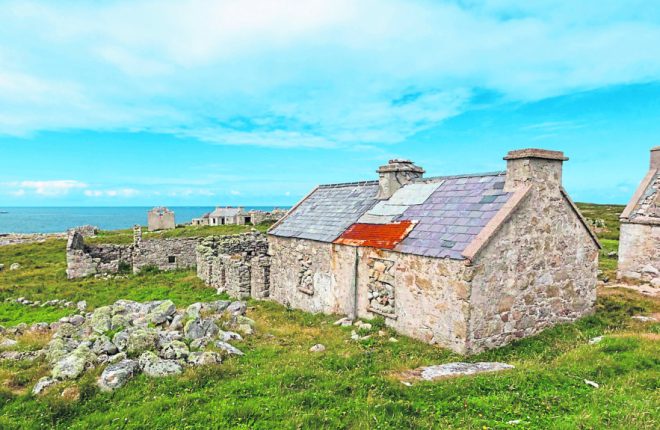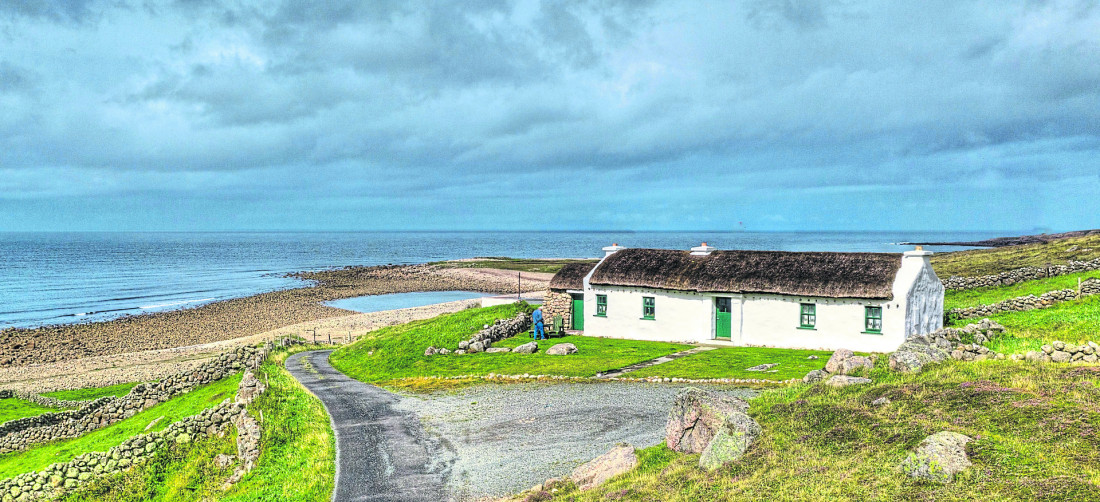Eamonn Coyle looks back on a time when wakes and funerals bound a community together.
I GREW up in the townland of Bun-a Leaca, Gaoth Dobhair, in the 1970s and 1980s.
My first memory of a major national and international event is Bloody Sunday, January 30, 1972. That event led to 14 unnecessary wakes and funerals. I still clearly remember my father repeatedly adjusting the aerial on the radio while trying to get coverage, as we didn’t have a TV at the time. Eventually, he cried: “Jesus Christ.”
The Paratroopers went into the Bogside and indiscriminately started shooting innocent civil rights marchers. “Dia is Muire linn.”
He was visibly upset by what he was hearing. For years after, I witnessed that same level of upset. I also remember his reaction on August 27, 1979, when 16 paratroopers were killed in Warrenpoint and Lord Mountbatten was killed in Sligo.
Though ultimately a republican, my father deeply valued human life and did not approve of violence in any form. He hardly ever drank alcohol and never showed even the slightest trace of aggression.
However, the biggest and deepest upset I ever witnessed in him was when his close next-door friend, Mickie Beag John Sheamuis, died in September 1993.
He was an undertaker and had previously stood over the wake and funeral of both his parents, events I am sure were emotionally difficult. But the death of Mickie Beag John Sheamuis, a key member of Clan Sheamuis, struck deeper than anything I had seen before.
Growing up, I witnessed births, wakes, and funerals. Back then, these events were stirringly emotional, moving, inclusive, and carried out in a true meitheal spirit.
When someone in the townland died, word spread quickly, even in the absence of mobile phones and only a few landlines. Regardless of the person’s age or status, the wake and funeral always followed the same celebratory traditional pattern.
As soon as the death occurred, locals would gather immediately at the house. In a coordinated, communal effort – a meitheal – they would begin preparing the house for the two-day wake. Local men and women would clean the home from top to bottom. The bed used by the deceased was removed, and once the undertaker delivered the coffin, it was placed in the same spot, usually in the bedroom, where it would remain until the funeral.
While one group cleaned the house, another would prepare the kitchen, arranging tea, cakes, and biscuits for mourners who would pass through over the coming days.
Tobacco and snísín would also be made available.
Soon after news of the death, the local priest would arrive to bless the corpse and return on both nights of the wake around 7.30pm to recite the rosary.
After the rosary, close neighbours and friends of the deceased would prepare to sit with the corpse through the night until 7am. This was considered a mark of deep respect. Though emotionally and physically draining, the overnight vigil was a community rite, and many local pub-goers would arrive after closing time to join in.
While the death itself brought sadness and mourning, these night vigils often turned into cultural gatherings, much like the Oíche Airneail. The unspoken understanding was that there was no point in being morbid. Instead, storytelling would take off, and the 12-hour night would pass before anyone noticed.
On the evening before a funeral, five local men would go to the graveyard at the foot of Cnoc Fola with picks and shovels to dig the grave. This too was done in the meitheal spirit, the same way turf or hay was cut and saved.
Everyone who helped during the wake would be served a three-course meal in the deceased’s house after the burial.
The whole arrangement was an altruistic, dignified ‘meitheal’ form of group effort.
It was just the way it was, and we never for one moment thought that it would or could ever be any other way. However, things changed.

An abandoned cottage on Inis Oirthear Island, Gaoth Dobhair – a haunting reminder of the families and traditions that once flourished on this remote Donegal island.
A jarring departure in Glasgow
After emigrating to Glasgow, I attended the wake and funeral of a fellow Bun-a Leaca emigrant. I was shocked by the impersonal, distant, and standoffish nature of the experience.
The wake was held in a funeral home with restricted visiting hours. There was no tea or biscuits, no sitting through the night. The contrast between that and 1970s to 1980s Donegal was stark, uncomfortable, and telling.
That distant tradition has now reached our own townland.
Wakes are now routinely held in funeral homes, with just a two-hour visiting slot the evening before the funeral.
With every tradition lost, a thread of the social fabric unravels quietly and irreversibly.

A shuttered cottage in Doochary, echoes of a time when wakes filled these rooms with tea, stories, meitheal and snisín.
The death of the wake, like so many of Donegal’s foregone customs, is a major cultural loss. Gone with it are the Oíche Airneail, the meitheal spirit, the card playing, and the unique rituals that once bound us together.
Donegal is a changed place.
Technology has brought many benefits, but the old traditions will be sorely missed.










